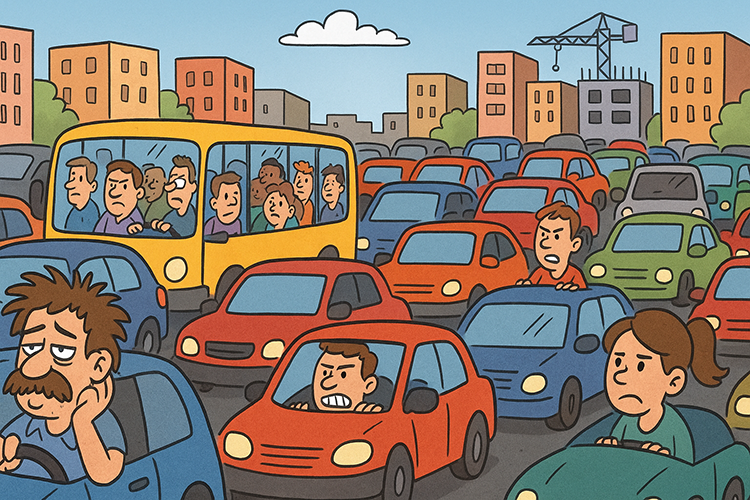Mitzilinka - Bucharest Traffic: A Sitcom Without a Commercial Break
If Dante ever ventured through Piața Unirii at 5 pm, he would likely swear off brimstone and prefer to premiere a tragedy entitled Stationary Steel. Today, Bucharest ranks among Europe’s most gridlocked capitals, and its traffic is less about getting from A to B and more about acquiring a meditation habit in the driver’s seat.
The capital sits high on global congestion lists, stubbornly holding a spot among the world’s worst. Drivers can expect average speeds of barely 17 km/h during peak hours, and in some cases it can take more than half an hour to cover ten kilometres. It is a level of slowness that invites reflection, podcasts, and perhaps the writing of a novel — all while in neutral.
Infrastructure projects are meant to ease the pain, though progress is mixed. The long-awaited A0 southern half-ring finally opened this summer, linking motorways and promising to steer transit traffic around the city. Unfortunately, the northern segments remain under construction, which means the relief is only partial. The result: more breathing room in some places, but no miracle cure.
Up north, the city is digging deep for salvation. April saw the launch of tunnel works on Metro line M6, a new connection planned between the central train station and the airport. One day, it may spare travellers the ordeal of inching along DN1 to catch their flights. For now, however, construction itself adds to the snarl — a case of traffic solutions making traffic worse before they make it better.
At the city’s core, work continues on the fragile Unirii Platform. Engineers insist the rehabilitation is vital, but for drivers the diversions are maddening. Even official detours often lead to longer routes and dead ends, proving that in Bucharest, the shortest distance between two points is rarely a straight line.
The DN1 corridor to Otopeni remains a byword for gridlock. With metro works now squeezing the route further, commuters face an even trickier passage, particularly when lorries and cars funnel into the same bottlenecks.
Urban specialists point to several potential fixes. Smarter traffic lights could one day adapt to real-time conditions, while expanded bus and tram priority lanes might lure drivers out of their cars. But change comes slowly, and experiments have yet to catch up with the sheer volume of vehicles. In some cases, well-meaning plans backfire. The temporary closure of Tram 41 this year removed one of the few truly efficient transit options, sending thousands of passengers back into cars and undoing gains elsewhere.
For now, every trip through Bucharest is an endurance event. Five kilometres demand rations and bottled water. A supposedly quick airport run becomes a gamble best prepared for with spare clothes and a stoic farewell to loved ones. Traffic isn’t simply part of life in the capital — it defines it.
The choice facing the city is stark. Treat congestion as an inevitability, or recognise it as the central problem shaping daily existence. If the latter, then roads, metro, traffic signals and public transport will need to align in rare harmony. Only then might Bucharest drivers discover something extraordinary: the sensation of arriving on time.
Author: Mitzilinka (Turning grim reality into comic relief—without losing the truth)








